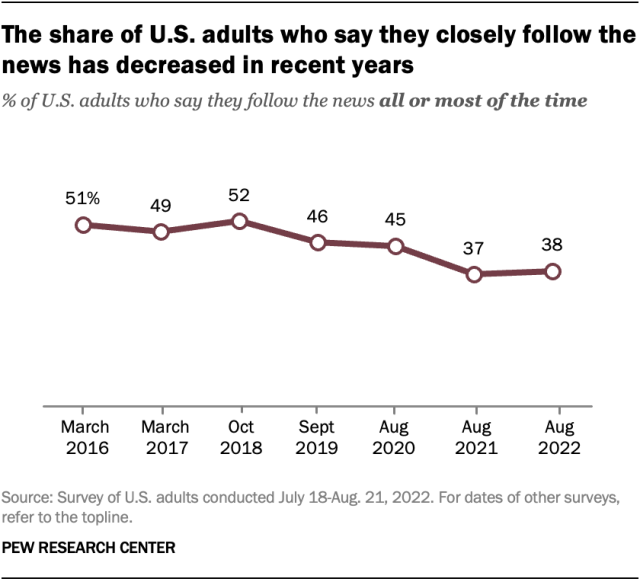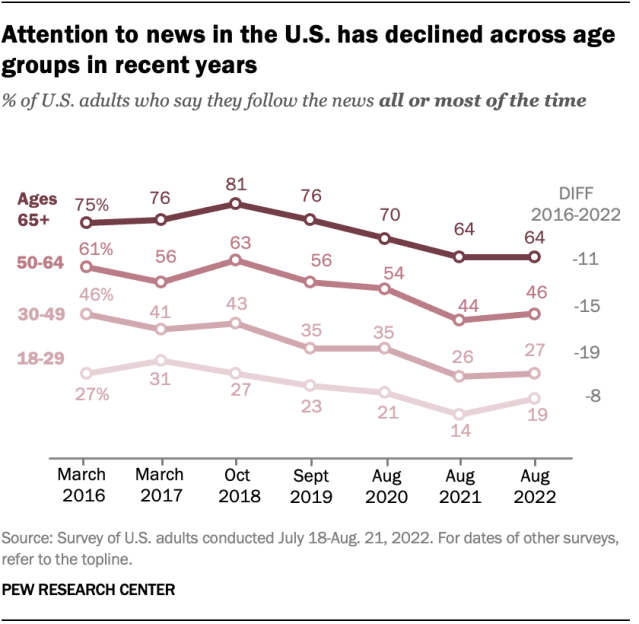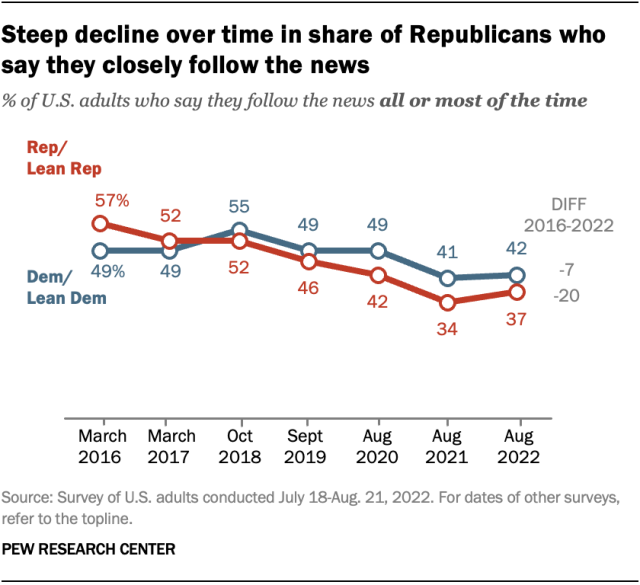
Americans are following the news less closely than they were a few years ago, according to a new Pew Research Center analysis. This comes amid changes in news consumption habits, declining trust in the media and high levels of news fatigue.
To examine how closely Americans follow the news, Pew Research Center conducted an analysis using seven survey waves from 2016 to 2022. The most recent survey was of 12,147 U.S. adults from July 18 to Aug. 21, 2022. Everyone who completes these surveys is a member of the Center’s American Trends Panel (ATP), an online survey panel that is recruited through national, random sampling of residential addresses. This way nearly all U.S. adults have a chance of selection. The surveys are weighted to be representative of the U.S. adult population by gender, race, ethnicity, partisan affiliation, education and other categories. Read more about the ATP’s methodology.
Here are the questions used for this analysis, along with responses, and its methodology.
Pew Research Center is a subsidiary of The Pew Charitable Trusts, its primary funder. This is the latest analysis in Pew Research Center’s ongoing investigation of the state of news, information and journalism in the digital age, a research program funded by The Pew Charitable Trusts, with generous support from the John S. and James L. Knight Foundation.

In 2016, 51% of U.S. adults said they followed the news all or most of the time. But that share fell to 38% in 2022, the most recent time we asked this question.
In turn, a rising share of Americans say they follow the news only now and then. While 12% of adults said this in 2016, that figure increased to 19% by 2022. And while 5% of adults said in 2016 that they hardly ever follow the news, 9% said the same last year.

Older adults are more likely to say they follow the news all or most of the time, while younger adults are less likely. However, Americans in all age groups have become less likely to say they follow the news all or most of the time since 2016.
For example, 46% of adults ages 30 to 49 said in 2016 that they followed the news all or most of the time. As of last year, 27% said this – a decline of 19 percentage points. Although the decline was smaller among adults 18 to 29, their share was relatively low to begin with: 27% said they followed the news closely in 2016, and this fell to 19% in 2022.
The recent decline in Americans’ attention to the news has occurred across demographic lines, including education, gender, race, ethnicity and political party affiliation. But the decline is still bigger among some groups than others.

For example, the decrease has been particularly steep among Republicans, who also have become much less likely to trust information from national news organizations in recent years.
In 2016, 57% of Republicans and independents who lean Republican said they followed the news all or most of the time. In the 2022 survey, 37% said the same, a decrease of 20 points. By comparison, the share saying this among Democrats and Democratic leaners dropped by only 7 points, from 49% to 42%.
Note: Here are the questions used for this analysis, along with responses, and its methodology.
